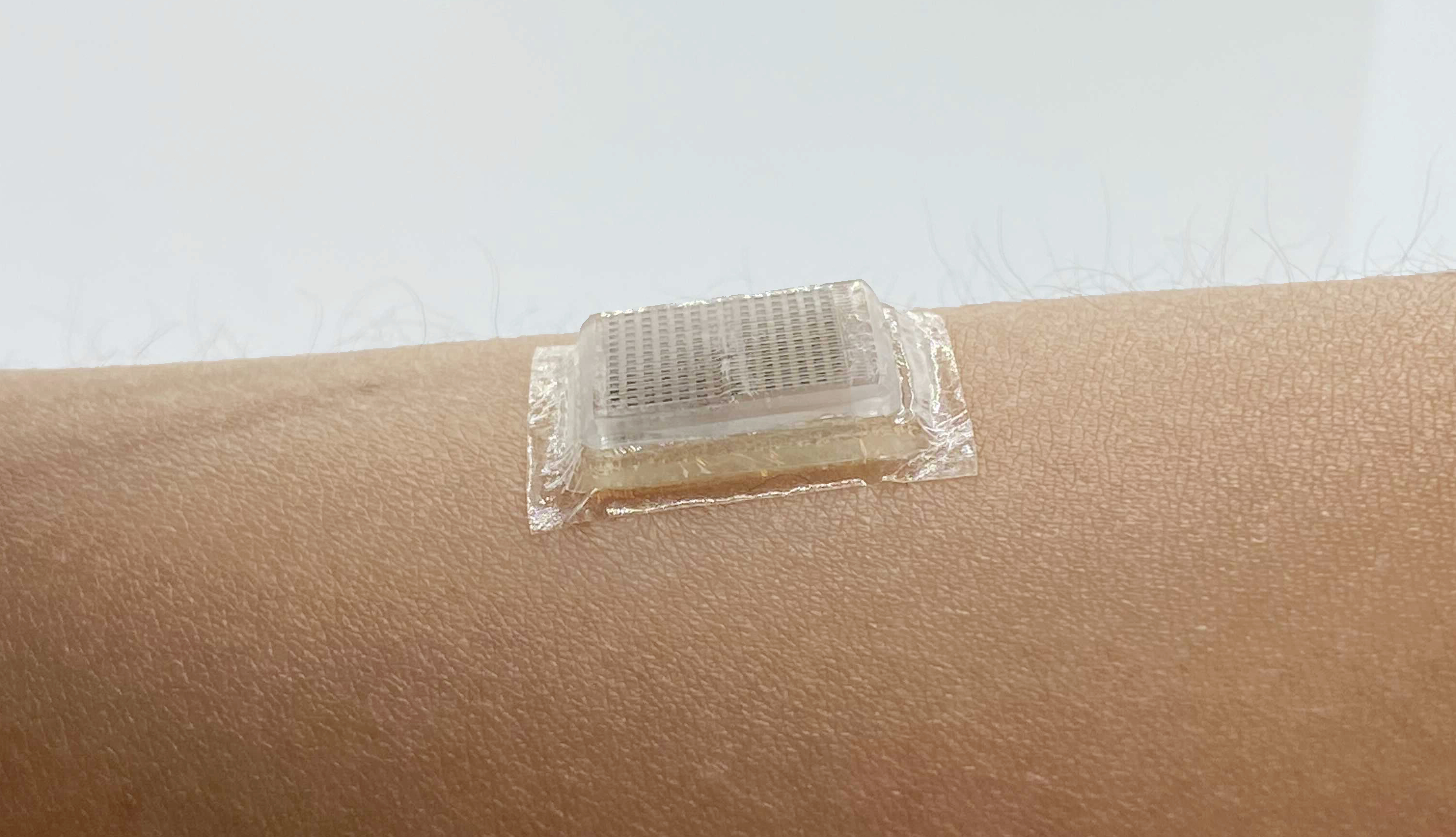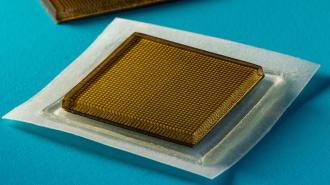MIT researchers have created an ultrasound sticker that can continuously monitor a person’s organs and tissues for up to 48 hours — potentially making ultrasound imaging as accessible and easy to use as Band-Aids.
“Welcome to the era of ‘wearable imaging,’” senior author Xuanhe Zhao told New Scientist.
While it’s not quite there yet, ultimately, they plan to make the technology available to consumers via a phone app, who could monitor their hearts, muscles, and pregnancies on demand.
The challenge: Ultrasound imaging is an incredibly valuable tool in healthcare. By directing soundwaves into a patient’s body and recording their reflections, doctors can capture images of organs and tissues without subjecting a patient to surgery or, in the case of X-rays, radiation.
Today’s ultrasound tech has limitations, though.
“A wearable ultrasound imaging tool would have huge potential in the future of clinical diagnosis.”
Chonghe Wang
Ultrasound machines are typically bulky, expensive, and only available in a healthcare setting, where a trained technician will press an ultrasound wand onto a patient’s skin after applying a gel that helps with the transmission of the waves.
This setup can not only be inconvenient (and expensive) for patients, it also makes it hard for doctors to take images over a long period of time — even if a robotic arm is used to hold the ultrasound wand in place on a patient, the gel will dry up and need to be reapplied.
The idea: A patch-like ultrasound device that could attach directly to a patient for hours or days at a time without drying out could revolutionize medical imaging — but past efforts to make one have been largely disappointing.
“[A] wearable ultrasound imaging tool would have huge potential in the future of clinical diagnosis,” said co-lead author Chonghe Wang. “However, the resolution and imaging duration of existing ultrasound patches is relatively low, and they cannot image deep organs.”
What’s new? The MIT team appears to have now succeeded where others have failed, developing a stamp-sized ultrasound sticker capable of producing high-resolution images of blood vessels and deeper organs for up to 48 hours.
The device features a rigid array of transducers that produce the ultrasound waves and record their reflection. It is attached to two thin layers of a rubbery material called an “elastomer.” Between them is sandwiched a solid hydrogel that does the job of the ultrasound gel.
“The elastomer prevents dehydration of hydrogel,” said co-lead author Xiaoyu Chen.
The bottom layer of elastomer is sticky and fits to a person’s skin like a Band-Aid. Because the ultrasound array on top of the elastomer layers is rigid, it remains relatively still, enabling the device to take clear images.

To test the ultrasound sticker, healthy volunteers wore it on their necks, chests, abdomens, and arms while doing a variety of activities, including biking and lifting weights.
The device remained in place for up to 48 hours while producing clear images of wearers’ organs, blood vessels, and muscles. The researchers could see volunteers’ stomachs distend as they drank juice and watch their hearts change shape during exercise.
Looking ahead: In its current state, the ultrasound sticker must be connected to instruments that translate its data into images.
That could be useful in a hospital setting — a doctor could attach a patch to a patient and let the device continuously monitor their heart without worrying about a gel drying out, for example — but the MIT team is working on a wireless version of the tech that patients could use at home.
“The patches would communicate with your cellphone, where AI algorithms would analyze the images on demand.”
Xuanhe Zhao
It’s also developing software to interpret data from the device and potentially even diagnose conditions — a sticker could keep tabs on a pregnant person’s baby, for example, or let a weightlifter know they’re on the verge of overusing their muscles.
“We envision a few patches adhered to different locations on the body, and the patches would communicate with your cellphone, where AI algorithms would analyze the images on demand,” said Zhao.
“We believe we’ve opened a new era of wearable imaging,” he continued. “With a few patches on your body, you could see your internal organs.”
We’d love to hear from you! If you have a comment about this article or if you have a tip for a future Freethink story, please email us at [email protected].





